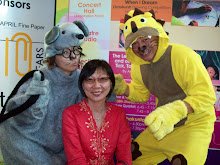Many of my LAS WSQ trainees who are support staff from academic libraries in Singapore find DDC hard to understand.
After running LAS WSQ Module 5 Support Bibliographic Control twice this year, I think there is a need to make DDC relevant to anyone who has an interest in DDC library classification system.
Dewey Decimal Classification (DDC) System
DDC is used in more than 200,000 libraries, mainly public or school libraries throughout the world and it has been translated into 35 languages.
The Dewey decimal system, using numbers and letters, coordinates materials on the same subject and on related subjects to make items easier to find on the shelves.
All knowledge is divided into ten main classes, which are listed below
000 Generalities
100 Philosophy and Psychology
200 Religion
300 Social Science
400 Language
500 Natural Science and Mathematics
600 Technology (Applied Sciences)
700 Arts
800 Literature
900 Geography and History
The ten main classes are then further subdivided.
Each main class has ten divisions, and each division has ten sections.
Hence the system can be summarized in 10 main classes, 100 divisions and 1000 sections.
To view the 10 main classes, 100 divisions and 1000 sections, go to
Dewey Decimal Classification, Wikipedia, the free encyclopedia at
http://en.wikipedia.org/wiki/List_of_Dewey_Decimal_classes#Classes
or
Download the DDC 22 Summaries (PDF format; 20 pages)
from OCLC at
http://www.oclc.org/dewey/resources/summaries/deweysummaries.pdf
If you like to train your support staff to do bibliographic control and other library tasks, you may like to enroll them for courses offered by Library Association of Singapore: http://www.las.org.sg/wp/training-development/for-support-staff/
If you like to give your teacher and student librarians some good understanding of Library Display with an introduction of DDC, you may visit
http://understandingddc.blogspot.com/2008/04/understanding-ddc-through-innovative.html
Dexterine Ho
Subscribe to:
Post Comments (Atom)


No comments:
Post a Comment